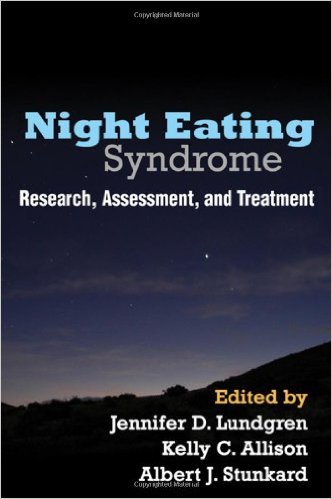
Reprinted from Eating Disorders Review
November/December 2012 Volume 23, Number 6
©2012 Gürze Books
Night Eating SyndromeResearch, Assessment, and Treatment |
Since it was first described in the 1950s, research into the Night Eating Syndrome has continued at a brisk pace. Much of this research has emanated from, and been inspired by, the work of Dr. Albert J. Stunkard, an indefatigable scholar and researcher still active in his 90s, who is now at the Center for Weight and Eating Disorders at the University of Pennsylvania. Studies in this field have expanded from clinical phenomenology and treatment to include molecular biology, neuroendocrinology, basic sleep physiology, and other areas of inquiry.
This welcome compendium brings together an international group of experts whose research has defined the cutting edges of this field. Contributors include not only the core group of investigators centered around Philadelphia, but other all across the nation and as far afield as Australia, Israel, and Italy.
After an excellent historical introduction, the volume is organized around sections devoted to biology; the association of night eating syndrome to eating disorders, as well as a wide range of other psychiatric disorders, medically weight-related conditions and sleep disorders; assessment; and treatment strategies, including pharmacologic, cognitive-behavioral, and other approaches.
Each chapter presents a succinct and scholarly review of its area, with suggestions for future research. While there is much to applaud in this book, several chapters especially caught my attention. For those not familiar with these issues, the chapter by Lundgren and colleagues on circadian rhythms associated with night eating syndrome provides a clear introduction to the syndrome and describes several new models for evaluating circadian eating behavior in humans. Howell and Crow’s chapter on nocturnal eating and sleep disorders distinguishes night eating syndrome from other sleep-related eating disorders, a clinically meaningful differential with important treatment implications. The chapters on assessment and treatment will be well received by clinicians dealing with these patients. In this regard Allison’s cognitive-behavioral therapy manual for treating night eating syndrome, included in a separate chapter, will be particularly useful.
This book will interest researchers and a wide audience of clinicians treating patients with eating disorders, obesity, and other psychiatric and sleep disorders as well.
– J.Y.
